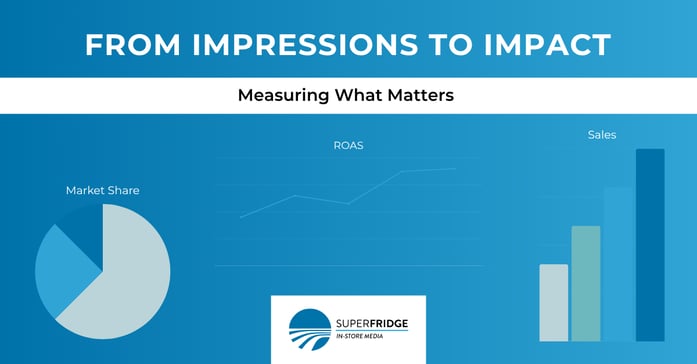From Impressions to Impact: Measuring What Matters in the CPG Retail Media Landscape

Despite billions invested in retail media, most consumer goods manufacturers are still flying blind when it comes to measuring post-promotion impact. According to the Promotion Optimization Institute (POI), 61% of CPGs struggle to execute promotions as planned, and 37% cite data ownership gaps as a key barrier to growth.1 Even more concerning, 38% say untapped insights continue to stall execution and strategy.2
For too long, CPGs have relied on anecdotal wins and vanity metrics. The future belongs to precision marketing powered by metrics that translate directly into revenue, market share, and strategic growth.
Post-Promotion KPIs That Signal True ROAS
To drive actionable outcomes and repeatable success, CPGs must track metrics that move the bottom line, including:
- Sales Velocity - This metric measures how quickly products are selling after the promotion ends. It helps gauge consumer demand and product movement.
- Market Share - Monitoring market share post-promotion indicates the company's competitive position and ability to retain gains from promotional activity.
- Promotion Effectiveness (including ROAS) - Calculating the return on investment from ad spend and promotions help determine if the campaign was successful in driving incremental sales and profit.
- Sell-Through Rate - This indicates how much of the promoted product was actually sold compared to what was received by the retailer.
- Sales Revenue - This is a fundamental KPI that tracks the total income generated from the sale of products.
Technology Stack for Smarter Retail Decisions
CPG leaders are investing in robust tech ecosystems to unify data and unlock promotional performance. Three technology platforms are the foundations for organizing data to support business decisions:
- Enterprise Resource Planning (ERP) systems - These systems integrate data from across the organization to provide real-time dashboards and visualizations of promotional performance.
- Business Intelligence platforms - These platforms offer advanced analytics and reporting capabilities to delve deeper into promotional data and identify trends.
- Trade Promotion Management (TPM) software - This specialized software helps CPGs manage, track, and analyze their trade promotions, ensuring efficient spending and maximizing ROI.
Why Post-Promotion Data Is Still Broken
Despite tech investments, brands are often left analyzing a promotion weeks after execution, without the precision or agility to pivot. These roadblocks persist:
- Lack of Campaign Control – Retail media execution varies by partner, limiting brand oversight.
- Delayed Reporting Cycles – Data lags hamper strategic decision-making.
- Fragmented Systems and Siloed Data – Integration across platforms is a bottleneck for 70% of marketers.3
- Inconsistent Retailer Data Structures – Disparate formats make trend identification nearly impossible.
- Limited Visibility into Purchase Behavior – First-party data is incomplete, and syndicated data arrives too late.
- POS Constraints – Often lacks competitive context, requires heavy lifting to normalize and extract value.
The net result? CPGs are left guessing at campaign ROI with partial views of consumer behavior and even more limited paths to optimization.
Choosing a Promotions Partner That Delivers
The new standard is clear: CPGs need partners that deliver fast, meaningful post-event analytics that directly inform strategy. Look for capabilities like:
- Sales Lift Attribution – Understand true campaign impact.
- Consumer Engagement Insights – Decode shopper behaviors and preferences.
- Regional and Channel-Level Reporting – Tailor future promotions with surgical precision.
Bottom Line: Measurement Must Drive Strategy
Access to timely, unified, and accurate post-promotion data is no longer a nice-to-have, it’s a growth imperative. By aligning with innovative partners and leveraging advanced analytics, CPGs can determine what works, abandon what doesn’t, and finally build a roadmap where promotions translate into lasting market advantage.
Tim Walker is Vice President of Retail Partnerships at Superfridge, a trusted in-store media and promotions platform for retailers and CPG brands. With more than 30 years of experience in retail operations, merchandising, and shopper marketing, Tim brings a deep understanding of how to align retailer goals with brand-driven performance. His leadership in partnership development and category strategy helps retailers unlock new revenue through Superfridge’s national and regional programs—turning everyday aisles into high-performing retail touchpoints.
Learn more at Superfridge.com.
Source:
1-3 “Seventy-eight percent of CPG Manufacturers struggle to manage modern trade, and 61% struggle to execute promotions as planned,” The Promotion Optimization Institute
